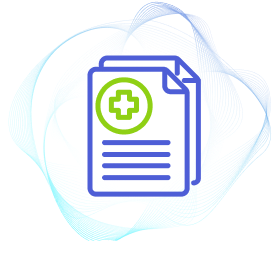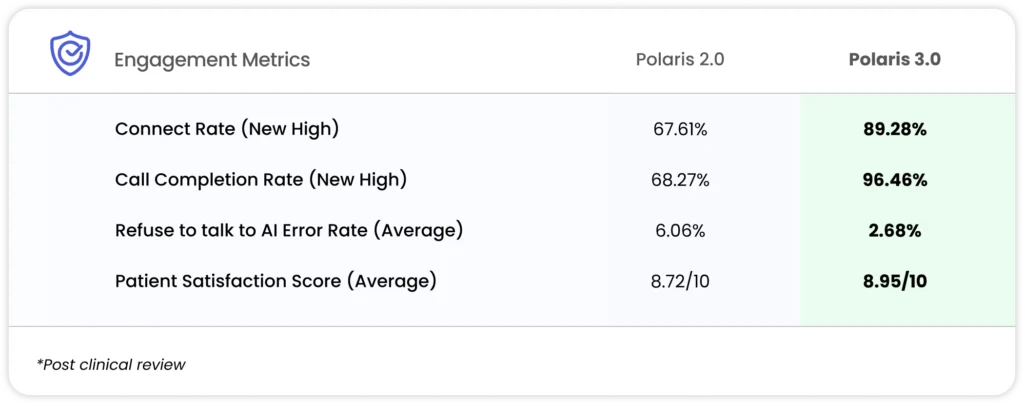Introducing

In celebration of our two year milestone, we’re excited to announce the launch of Polaris 3.0, our most advanced and safest healthcare LLM constellation to date.
Polaris 3.0 represents a groundbreaking leap forward, featuring 4.2 trillion parameters across 22 specialized LLM models. This powerful constellation achieves a clinical accuracy rate of 99.38%, a notable improvement over Polaris 2.0’s 98.75% and Polaris 1.0’s 96.79%.
Polaris 3.0 was developed with extensive real-world feedback gathered directly from patients and their healthcare providers. This collaboration ensured that the models are not only highly accurate but also finely tuned to the nuanced, real-world interactions. As a result, Polaris 3.0 has driven improvements in patient engagement metrics, most notably increasing patient satisfaction scores from 8.72/10 with Polaris 2.0 to 8.95/10 with Polaris 3.0.

“Since the founding of Hippocratic AI, we partnered with health systems and clinicians to ensure our AI agents were safe and effective enough to use in patient-facing clinical operations. After hiring 6,234 US licensed clinicians to test our product with over 307,038 test calls, and incorporating the learnings of real world evidence from over 1.85 million patient calls made in Polaris 1.0 and 2.0, we have achieved a new milestone in safety unmatched by any other Generative AI healthcare agent.”
Munjal Shah, Co-founder and Chief Executive Officer.
Real World Evaluation of Large Language Models in Healthcare
(RWE-LLM ): A New Realm of AI Safety & Validation
Alongside the launch of Polaris 3.0, we published our innovative Real-World Evaluation of Large Language Models (RWE-LLM), a pioneering safety framework for generative AI for healthcare at scale. By sharing this the methodology, we aim to empower the broader healthcare and AI communities, enabling others to build upon this work and collectively advance the safety and effectiveness of AI in healthcare.





Polaris 3.0 significantly enhances speech recognition accuracy in challenging real-world phone calls by addressing background noise, unclear speech, and critical medical information:






“Vertical AI agents require features that are unique to that specific environment and handle the long tail of issues. Our goal for Polaris is a level of product perfection to ensure that our products meet or exceed the rigorous requirements of real-world clinical and patient environments, and are not just a novel AI tool.” said Subho Mukherjee, Chief Scientist of Hippocratic AI. “While Polaris 3.0 release gets us much closer to that goal, it is one we will continue to relentlessly pursue.”
Subho Mukherjee, Co-founder and Chief Scientist of Hippocratic AI